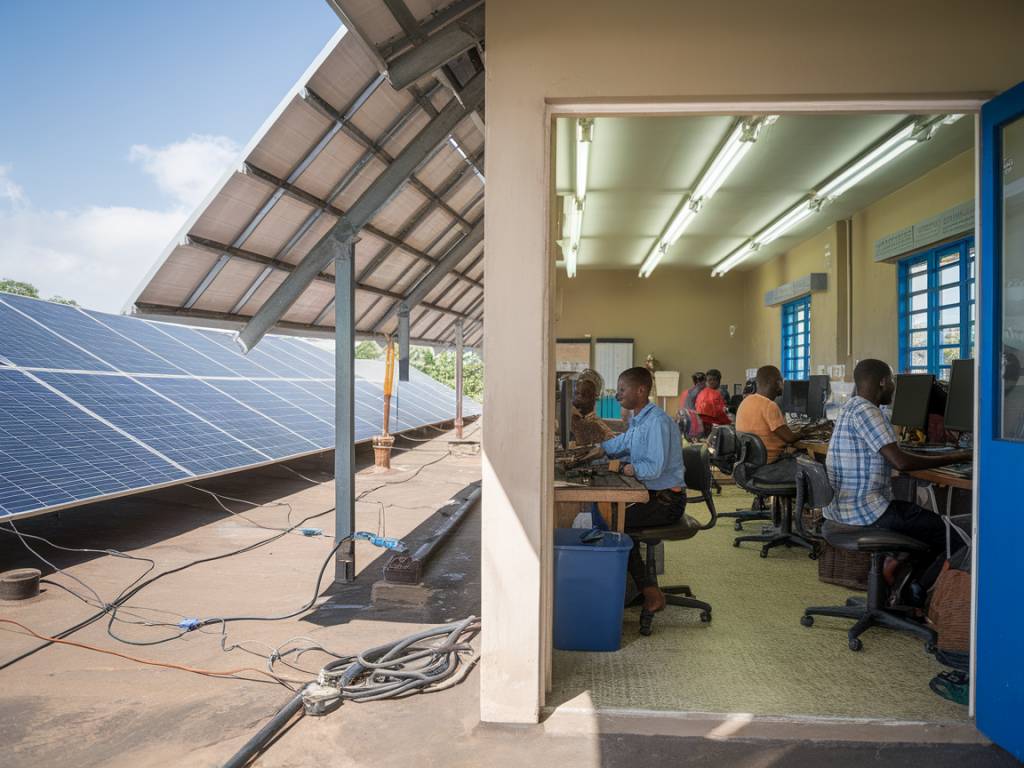Empowering Communities: How Microgrids are Breaking Barriers in Developing Countries
Access to reliable electricity has always been a cornerstone of development, yet millions of people in developing countries still live in darkness. Traditional power grids, while effective in urban areas, often fall short in reaching rural and remote regions. Enter microgrids — an innovative solution that’s lighting up underserved communities and driving sustainable progress. But how exactly do microgrids break these barriers, and why are they such a game-changer?
The Problem with Traditional Grids
Conventional power grids are centralized systems that require significant infrastructure investments. Installing high-voltage transmission lines to cover long distances and link cities with sparsely populated villages is both costly and time-consuming. For countries with limited financial resources, this solution just isn’t feasible.
Moreover, these grids are susceptible to failures due to weather events or overloads, which can lead to frequent blackouts. For communities already struggling with inconsistent access to power, reliance on such systems can perpetuate a cycle of energy poverty.
What Are Microgrids?
A microgrid is an independent energy system that can operate autonomously or integrate with the larger grid when needed. Typically powered by renewable energy sources like solar panels, wind turbines, or small hydroelectric stations, microgrids deliver clean, reliable electricity directly to local communities.
The magic of microgrids lies in their scalability and adaptability. From powering a single village school to supplying an entire rural community, they provide tailored solutions where conventional grids fall short. And with increasing advancements in Green Technology, their potential is only growing.
Real-World Impact: Case Studies That Inspire
Let’s take a look at two examples of how microgrids are transforming lives in developing countries.
Bangladesh: Solar Microgrids Turning Night into Day
In rural Bangladesh, where sunlight is abundant but reliable electricity is scarce, solar microgrids are revolutionizing daily life. One standout project is the installation of solar-powered microgrids in previously unelectrified villages. These systems power homes, schools, and small businesses, allowing children to study after dark and entrepreneurs to grow their ventures.
Today, more than 6 million off-grid homes in Bangladesh rely on solar energy, showcasing how decentralized solutions can rapidly scale up to serve millions.
Kenya: Empowering Entrepreneurs with Microgrids
In Kenya, microgrids powered by a combination of solar and wind energy are creating opportunities for business owners in rural areas. By providing stable energy, these microgrids enable the operation of refrigeration units for storing perishable goods, water pumps for irrigation, and electric tools for small workshops.
One anecdote comes from a woman named Amina, who owns a small dairy business in a remote village. Before the microgrid, she could only sell milk within a few hours of production. Today, she uses refrigeration to store her products and has expanded her reach to nearby towns, tripling her income.
Overcoming Challenges to Microgrid Implementation
While the benefits of microgrids are undeniable, their deployment in developing countries isn’t without challenges. Financial, technical, and regulatory barriers must often be addressed before these systems can reach their full potential.
Financial Barriers
The upfront costs of installing microgrids can be high. However, innovative financing models, such as pay-as-you-go systems and public-private partnerships, are helping to make them more affordable. Organizations like the World Bank and private foundations are also stepping up, providing grants and low-interest loans to kickstart projects.
Technical Expertise
Maintaining microgrid systems requires a certain level of technical expertise, which can be scarce in rural communities. To address this, many initiatives include training programs to build local capacity. By empowering residents to manage and maintain the systems themselves, these programs ensure the longevity and sustainability of the microgrids.
Regulatory Hurdles
Some developing countries lack the regulatory framework needed to support renewable energy projects and microgrid implementation. Pilot projects often serve as proof-of-concept initiatives, encouraging governments to adopt more lenient policies and invest in decentralized energy solutions.
The Role of Green Technology in Scaling Microgrids
Advances in green technology are making microgrids more efficient, affordable, and accessible than ever before. Innovations like smart meters and energy storage systems are enabling better energy management and ensuring a stable supply of power, even in fluctuating conditions.
- Smart Meters: These devices help optimize energy consumption and reduce waste by providing real-time data about supply and demand.
- Energy Storage: Batteries, such as lithium-ion or newer technologies like solid-state batteries, store surplus energy for use during cloudy days or at night.
- Open-Source Platforms: Tools like open-source microgrid software allow communities to monitor and manage their systems, fostering independence and reducing operational costs.
Sparking a Ripple Effect
Beyond just lighting up homes and businesses, microgrids are fostering a ripple effect of sustainable development. Reliable electricity leads to improved healthcare services, better educational outcomes, and new economic opportunities. Women, in particular, benefit from these advancements, as they’re often the most affected by energy poverty.
For instance, in India, electrified villages report a noticeable decrease in the use of kerosene lamps, which has a direct impact on air quality and respiratory health. Children are healthier, and families save money previously spent on fuel, redirecting it toward education and other needs.
Looking to the Future
Microgrids represent not just an energy solution but a pathway to achieving broader sustainability goals in developing countries. By harnessing renewable energy and embracing localized solutions, these communities are forging a brighter and more equitable future.
So, when we think about energy innovation, remember this: it’s not just about cutting-edge technology. It’s about creating meaningful change where it’s needed most. And in the case of microgrids, the light they bring is illuminating the way toward sustainable progress for all.
